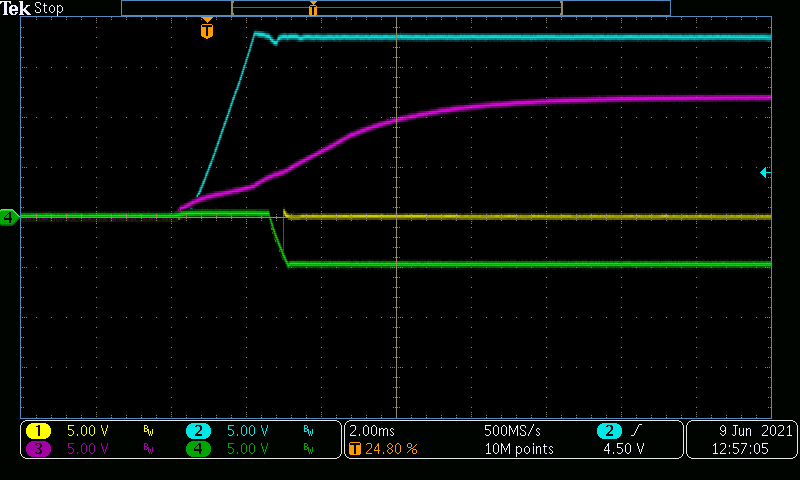TIDT244 July 2021
4.6 Bias Voltage Start-up
This board uses +18 V (BLUE), +12 V (RED), and –5 V (GREEN) bias rails to operate. The following figure shows the start-up behaviors of the +18 V, –5 V, and EN-drv (YELLOW) signals when the external 12-V bias is applied at J4. The start-up speed of the bias rails is determined by the start-up speed of the external 12-V bias.
 Figure 4-12 (+18 V: 5 V/DIV, +12 V: 5 V/DIV, –5 V: 5
V/DIV, EN-drv: 5 V/DIV, 200 ms/DIV, BWL = 20 MHz)
Figure 4-12 (+18 V: 5 V/DIV, +12 V: 5 V/DIV, –5 V: 5
V/DIV, EN-drv: 5 V/DIV, 200 ms/DIV, BWL = 20 MHz)